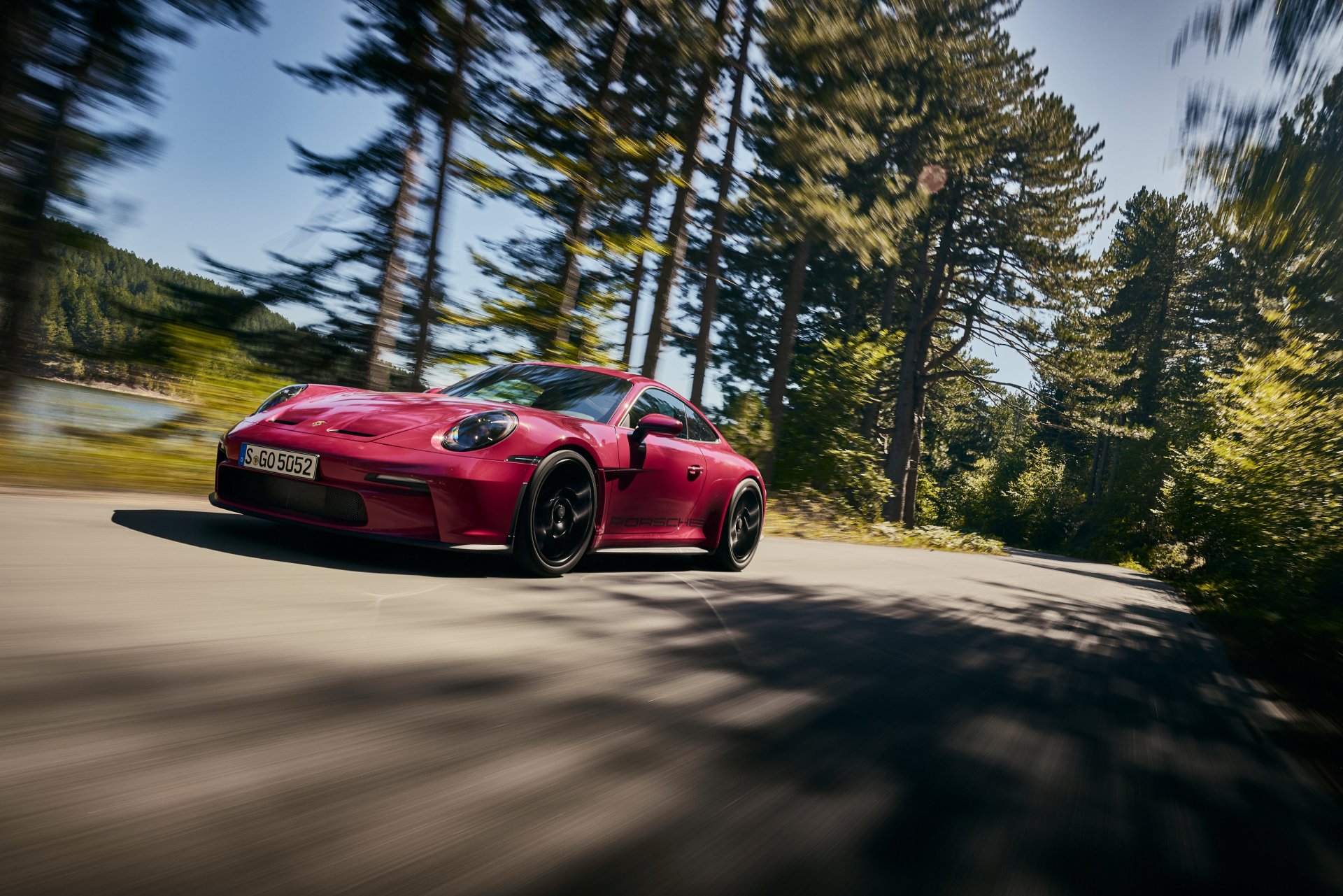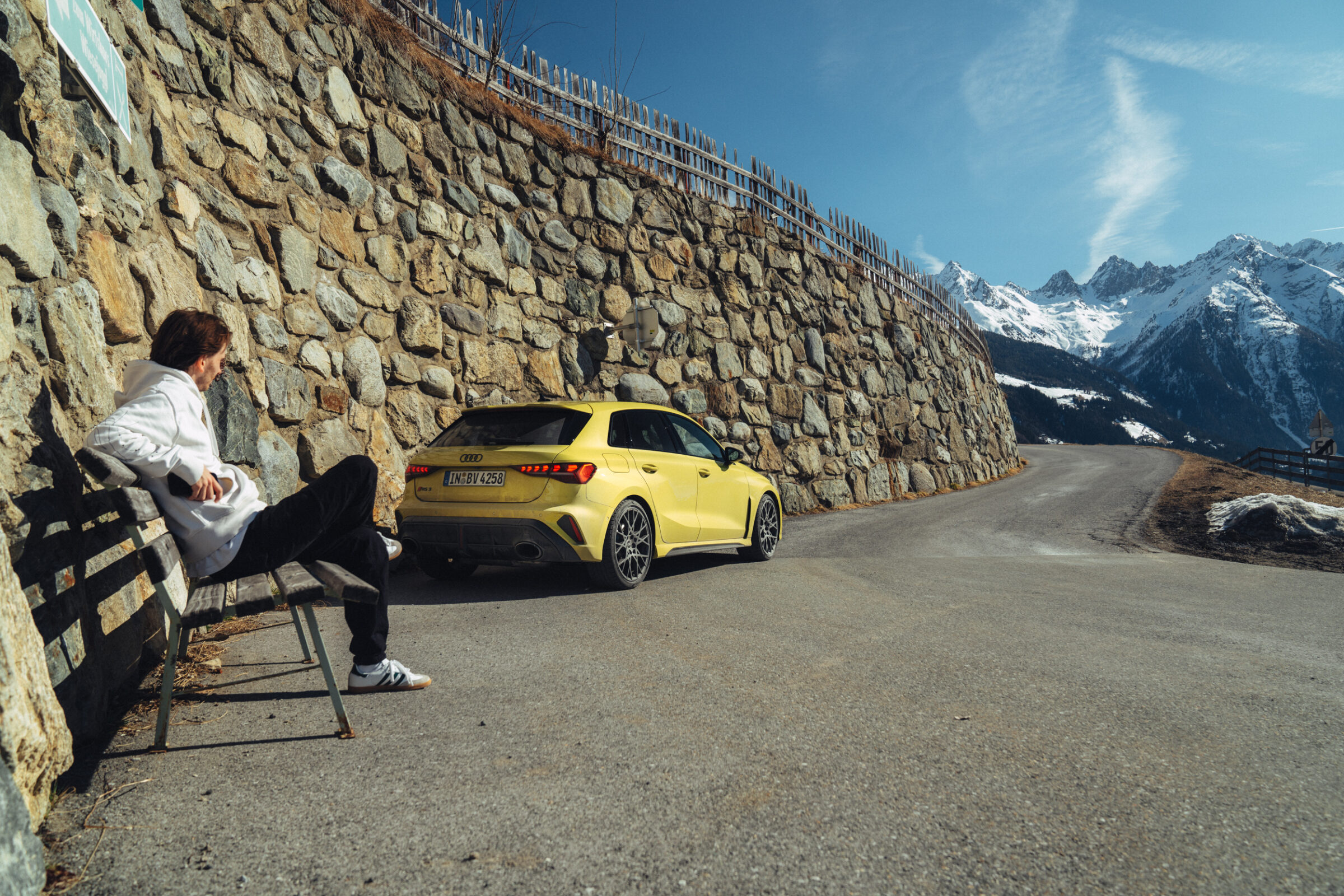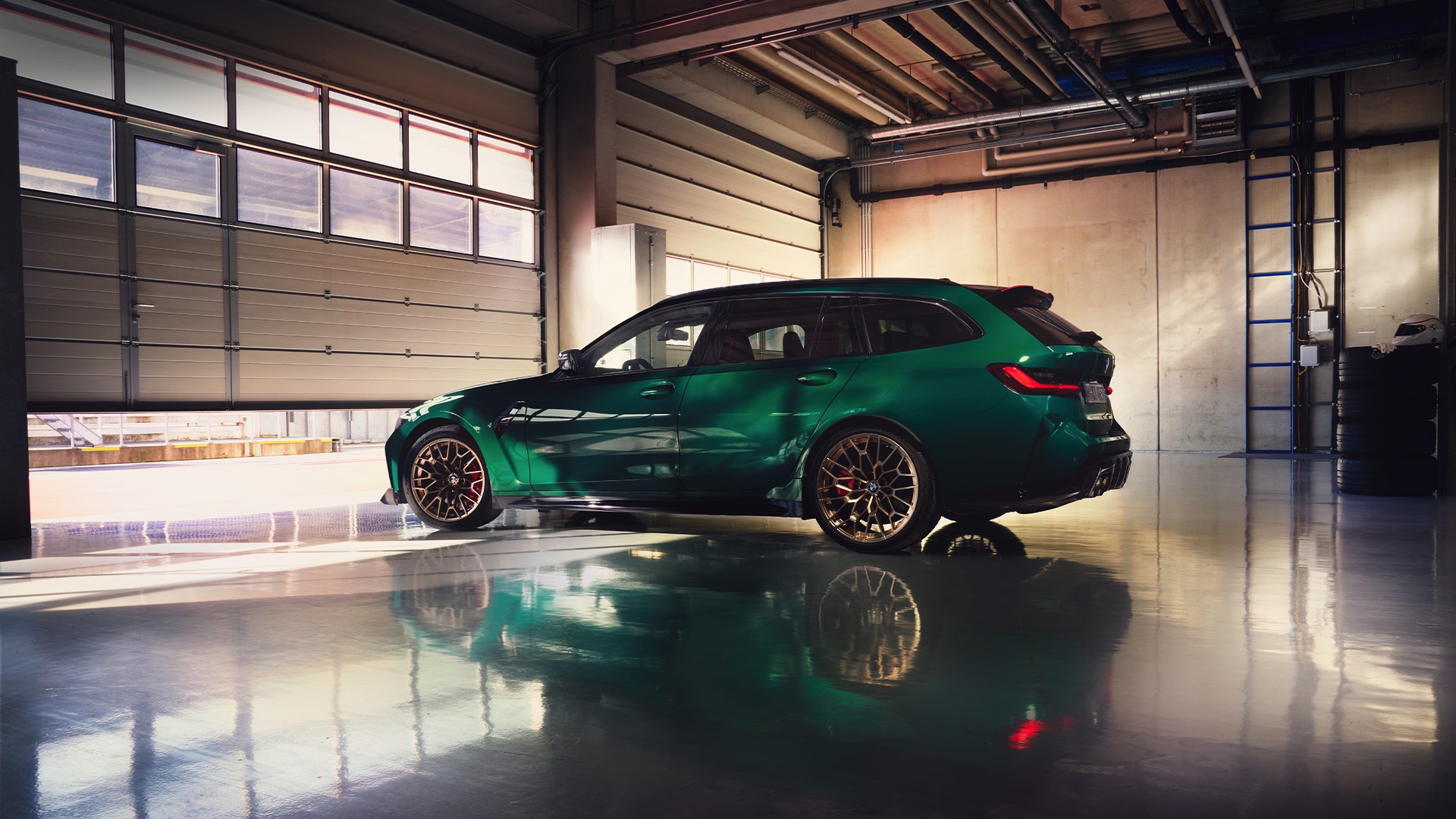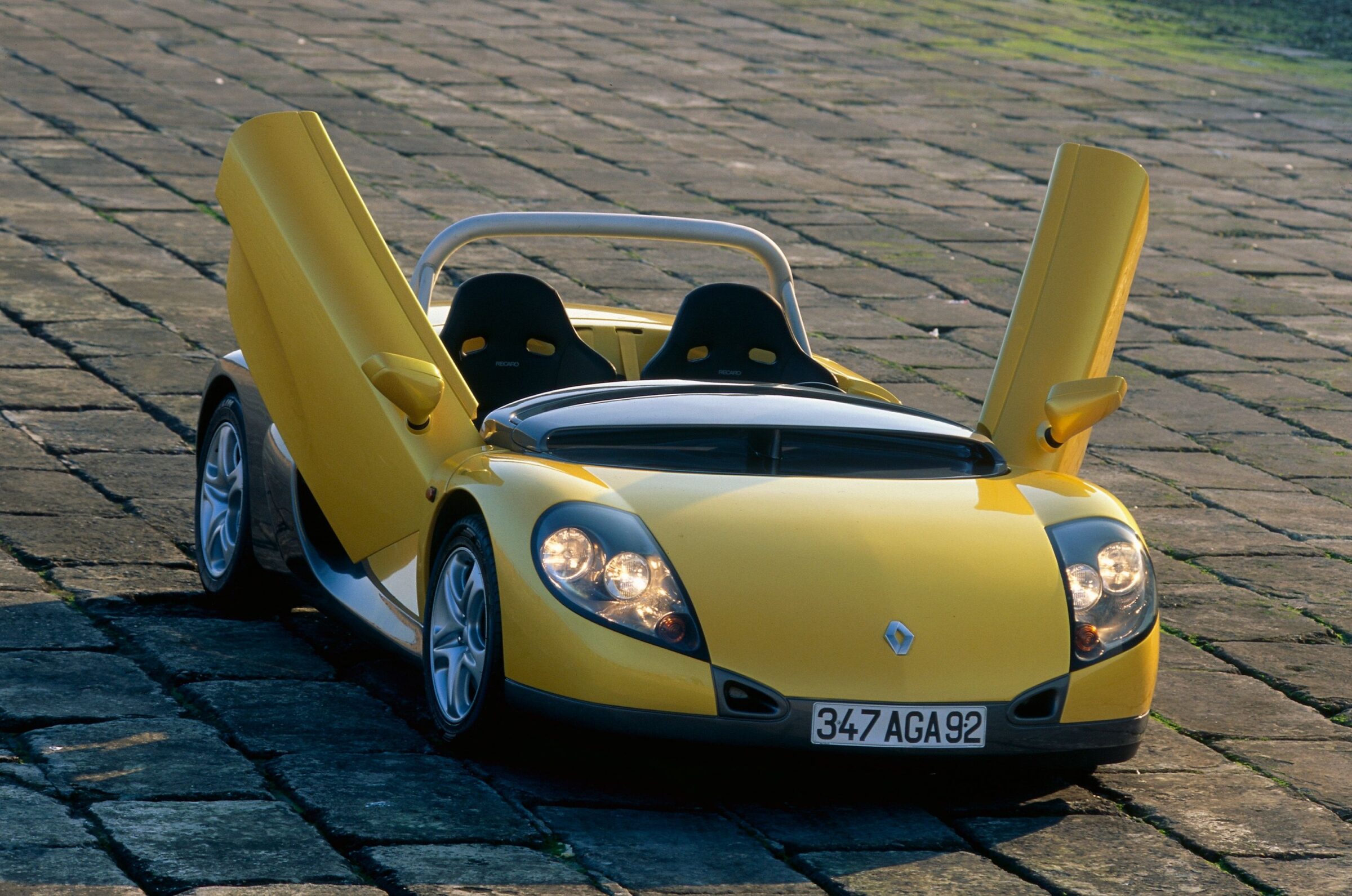No room for frills! – Porsche 911 ST (992)
Porsche celebrated its 75th anniversary last year and presented itself and 1963 customers with the Porsche 911 ST. And just in time for the 911’s 60th birthday. Coincidences do happen! The 992 ST is intended to embody this long history and set new standards in terms of performance and technology. In Calabria, Italy, we take a closer look at the masterpiece from Zuffenhausen and reveal what makes the lightest model in the 992 series so special.
GT3 Touring + GT3 RS = ST ?
Although it is not quite that easy, the decision was made in Zuffenhausen to combine the strengths of the 911 GT3 Touring and the GT3 RS and to give the result the abbreviation ST. First of all, there is the engine. The ST features the high-revving, naturally aspirated six-cylinder engine from the 911 GT3 RS with its 525 hp. Step 2 on the agenda was no less important and deals with lightweight construction. The insulation is reduced proportionately, the windows are made of thin glass and the door openers in the interior are reduced to loops. The use of a “Track” lithium-ion battery with a capacity of 40 Ah and a weight of just 9.5 kilograms is reminiscent of the lightweight starter battery of the legendary 911 Carrera RS 2.7 from 1972. The lightweight CfK doors come from the 911 GT3 RS, the front lid from the 911 GT3 Touring.
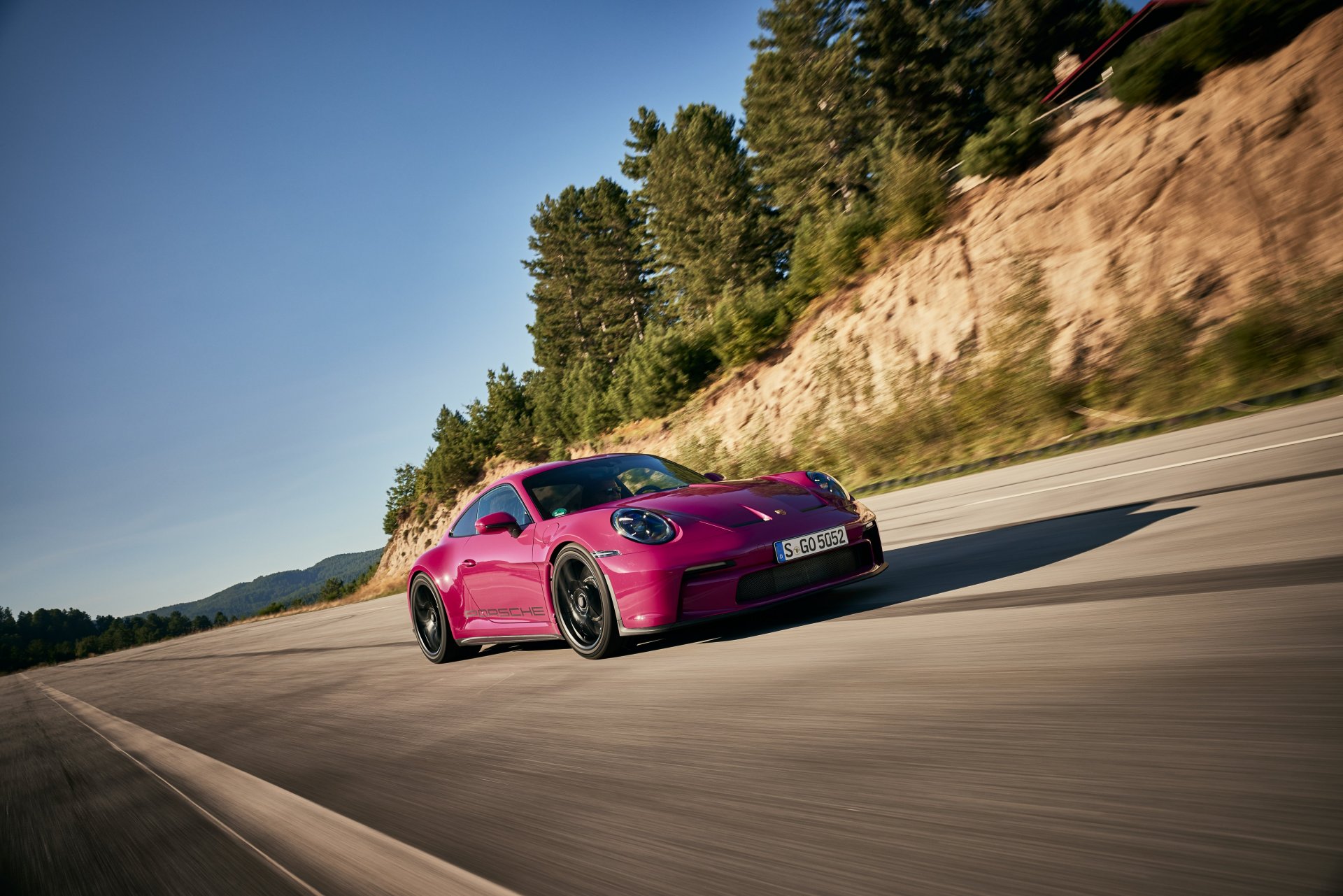
Andreas Preuninger, Head of Porsche GT Vehicles, emphasises the crucial importance of weight for the driving experience of the 911 ST. Every gram saved not only enables faster acceleration, but also influences braking behaviour and steering precision. The new 911 ST therefore has a total weight of 1380 kilograms, making it the lightest 911 in the 992 series.
Porsche has also focussed intensively on reducing the rotating masses around the boxer engine. The introduction of a lightweight clutch based on the twin-disc principle and the use of a single-mass flywheel not only contribute to a weight reduction of 10.5 kilograms, but also improve the responsiveness of the vehicle. The six-speed manual gearbox ensures an incomparably active and exciting driving experience.
“The rear-axle steering was labelled as a gimmick and was removed from the ST, resulting in a 6.5-kilogram reduction and the option of using a lithium-ion battery, which subtracts a further 3.5 kilos.”
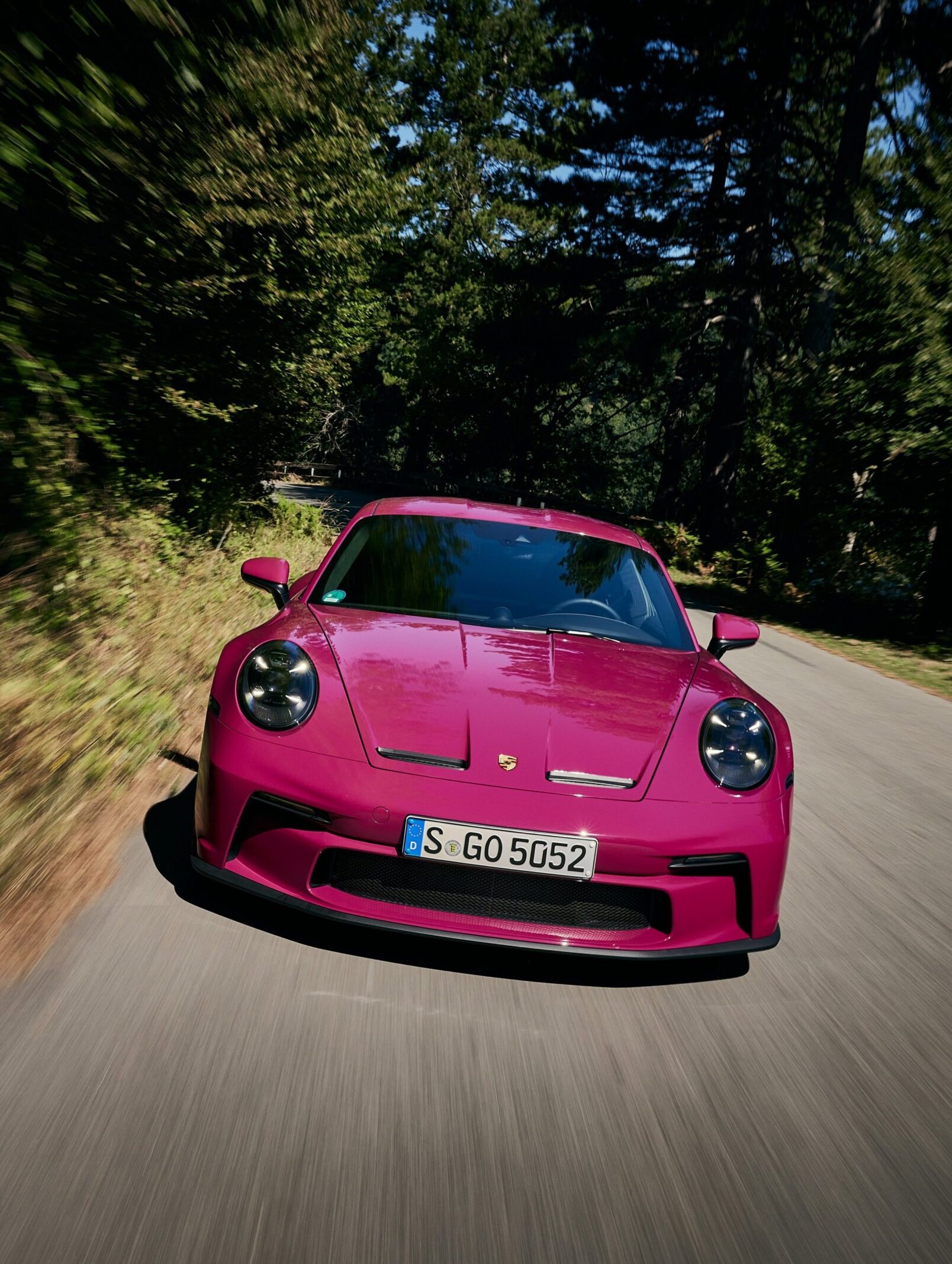
La dolce vita with a shot of star ruby
On the winding mountain roads of Calabria, the Porsche 911 ST reveals its true purpose in its eye-catching yet discreet exterior colour (yes, that is possible!). Even the slightest press of the accelerator pedal is visible on the rev counter and is transformed into propulsion without delay. The installed lightweight clutch and the use of a single-mass flywheel not only contribute to the weight reduction of 10.5 kilograms, but also to the overwhelming response behaviour. All this paired with the 6-speed manual gearbox – driving a 911 couldn’t be more impressive. This is clear from the first few kilometres.
The naturally aspirated engine of the Porsche 911 S/T demands a special kind of admiration. When it revs up to 9000 rpm, it unleashes the full power of its 525 horsepower. On the way to the 9000, the ST offers an entire orchestra in the rear of the vehicle. When the sounds from the twin-flow instrument reach our ears almost unmuffled, we feel goose bumps all over our bodies. Sounds cheesy – but it was.
Country road speed is reached in just 3.7 seconds, without any loss of power. Electric cars may achieve this value effortlessly, but the feeling conveyed by the S/T and other boxer engines remains unrivalled and is a lasting inspiration. The adaptive suspension also contributes to this impressive driving experience. It reacts both sensitively and precisely to the rough southern road surface. The ST only comes to an end at 300 km/h, but on that day in Calabria we don’t think about it for a second, the urge to experience the next bend is too strong – just before shifting down, turning in and hearing the naturally aspirated engine scream out of the bend exit. German motorways are somewhere far back in the hippocampus of our minds.

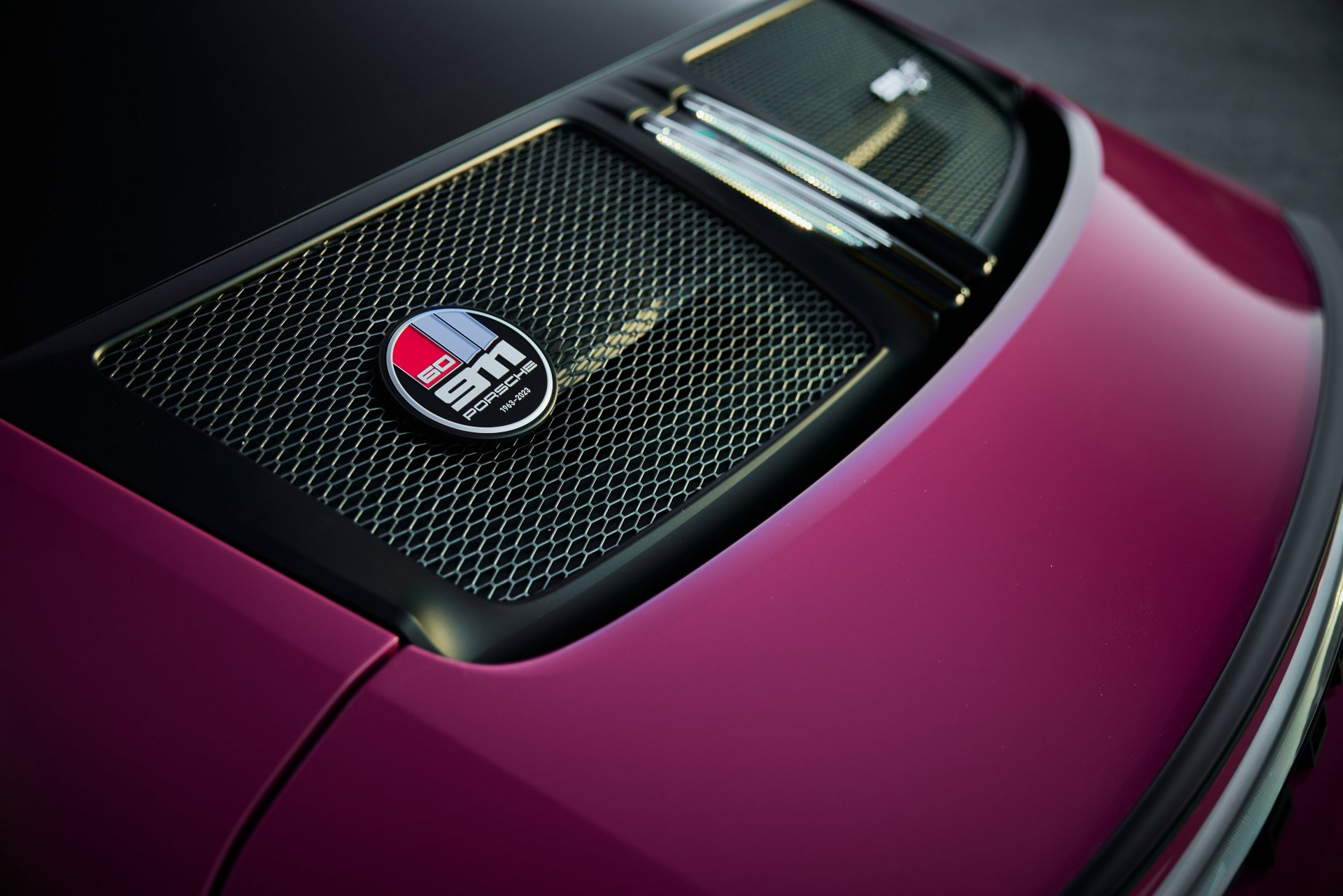



The naming of the new 911 S/T is a tribute to a particularly sporty version of the first 911 generation. The 911 S was offered from 1969 in a special competition version, known internally as the 911 ST. In contrast to today’s GT models, no large spoilers or other aerodynamic improvements were used at that time. These vehicles focussed on modifications to the chassis, wheels, engine and body in order to increase their performance. The new 911 S/T brings the spirit of the original 911 S (ST) into the 21st century by combining elements of the 911 GT3 RS with the body of the 911 GT3 and adding exclusive components.
The 911 ST is a car for connoisseurs, for those who don’t care about pure numbers and prefer to drive in the mountains or on country roads. The 1,963 units of the 911 S/T, which were available at an entry-level price of 292,000 euros, have long been sold out. Only time will tell how high the prices on the second-hand market will rise.
Porsche 911 ST
Engine: 6-cylinder-Boxer NA, 3.996 ccm
Power: 525 hp @ 8,500 rpm
Weight: 1380 Kilograms
Acceleration: 0-100 km/h in 3.7 s
V-Max: 300 km/h

